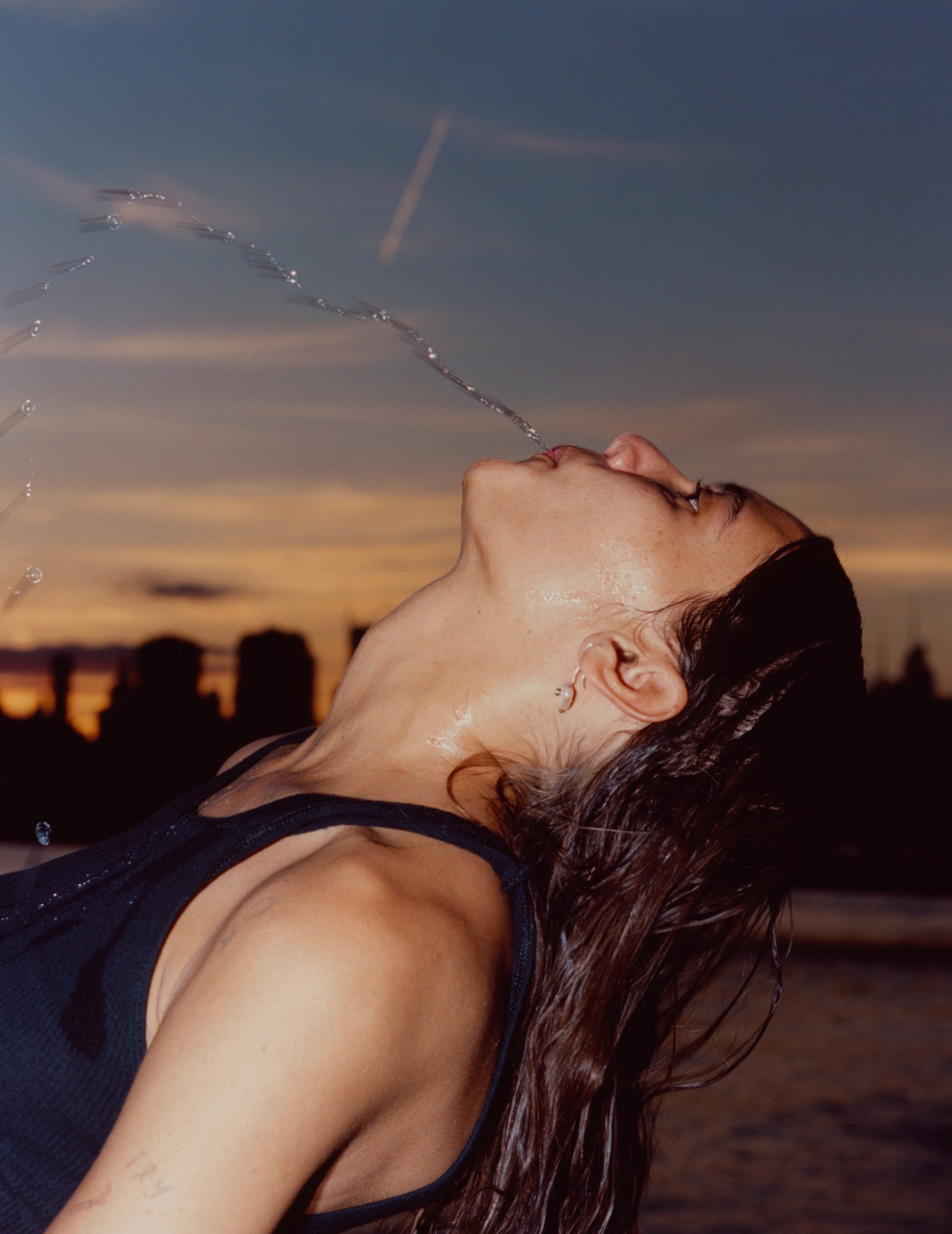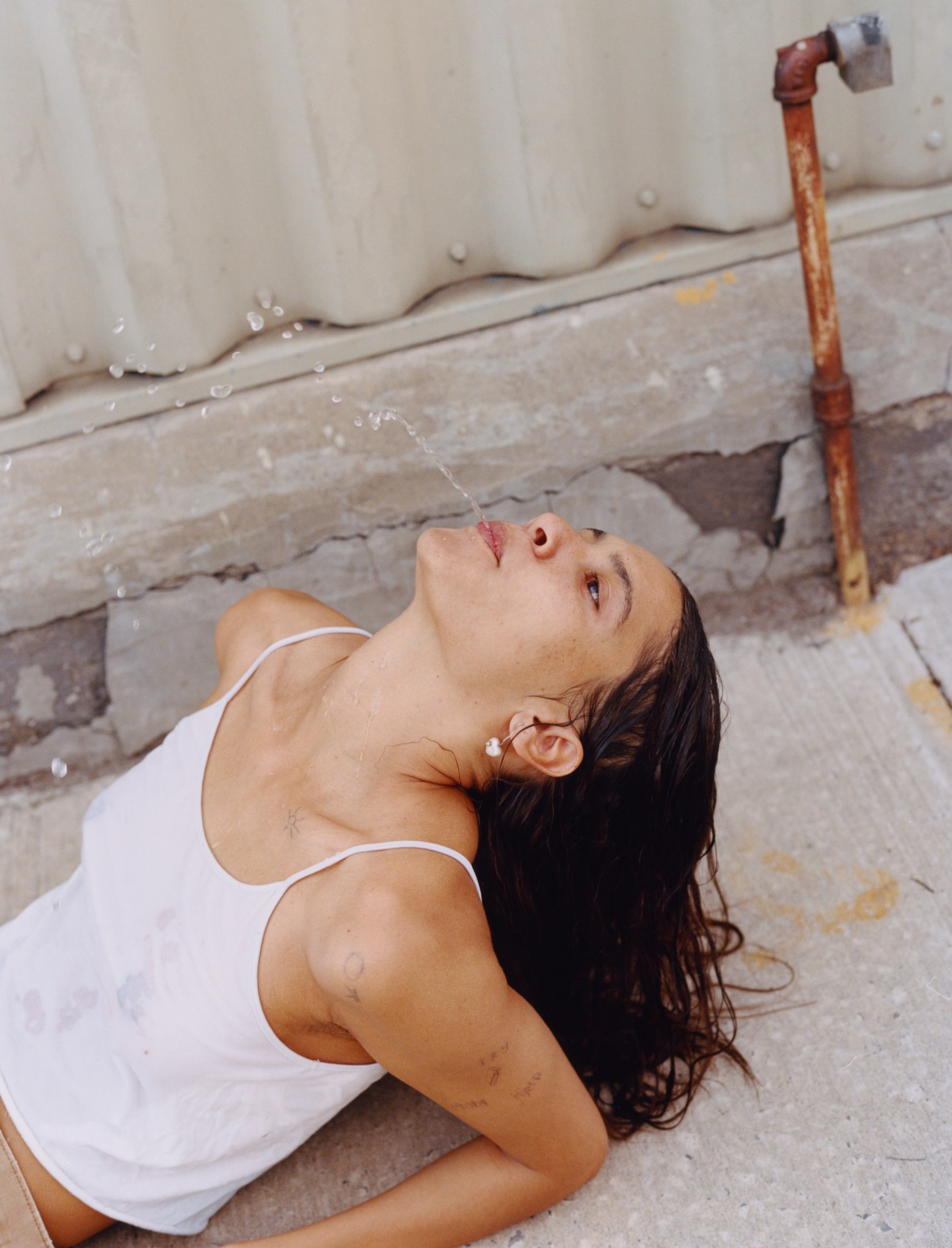Kaya Wilkins has always had a connection with water. The 29-year-old musician grew up in a small peninsula town in Oslo, Norway that was surrounded by idyllic lakes, and when she moved to New York City at age 19 to pursue a modeling career, being near the East River in Greenpoint was “essential.” Although her new album is called Watch This Liquid Pour Itself, and its lead single is a musical interpretation of a scuba diving manual, the record actually has very little to do with water.
“The liquid that I’m pulling from in this record isn’t actually about water at all,” Wilkins says. “Really, what I’m referring to is one of the four humours of greek medicine, black bile. And if you’ve had too much of it, it can turn you into a raging, melancholy person.”
“And the reason I’m referring to this bile is because it’s something that’s coming out in the purge, and the purge is the songs,” she says with a swiftness that suggests she’s given this spiel before.
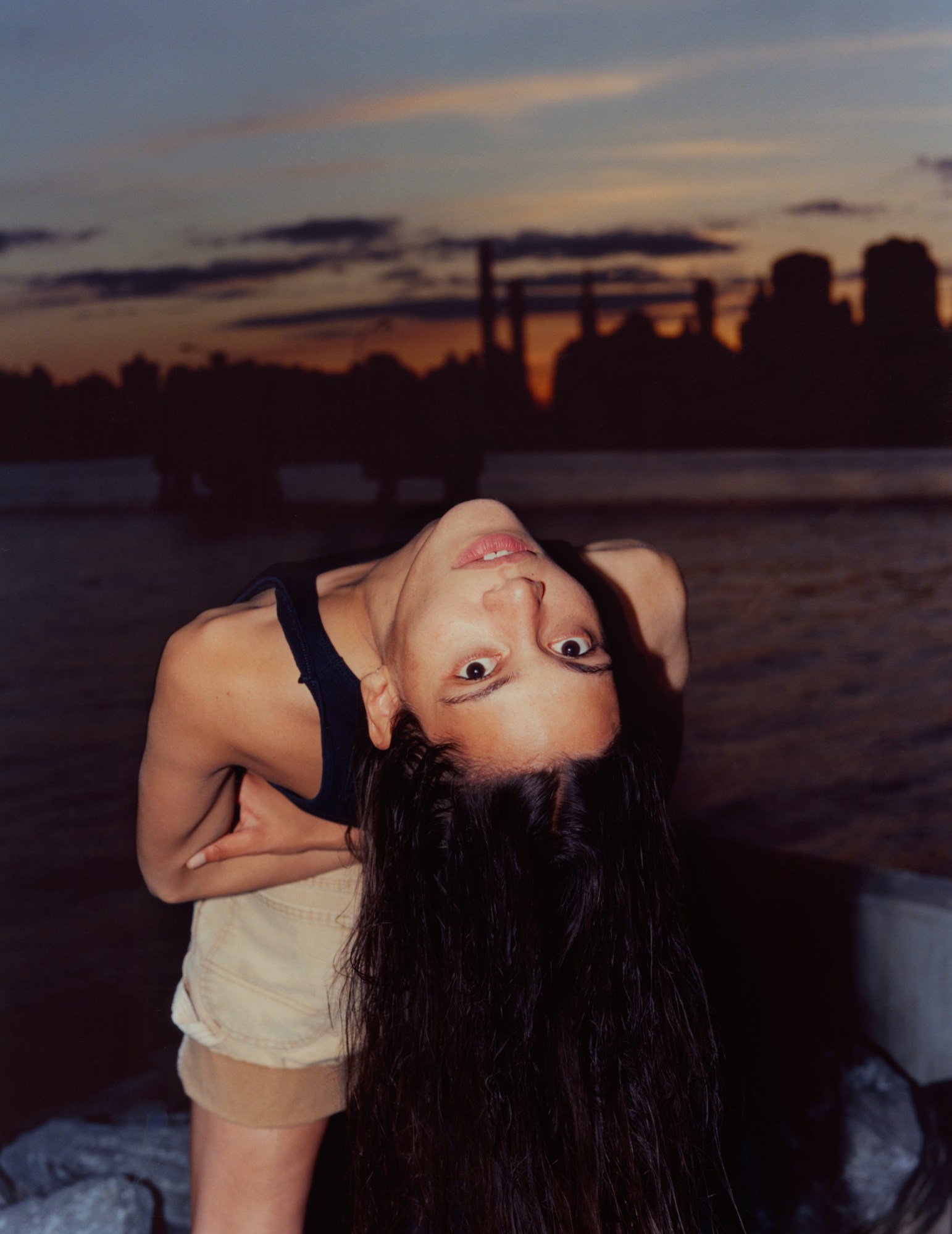
Her songs being not as they appear is something she strives for in the music she writes as Okay Kaya. For instance, “Psych Ward” is a remarkably straightforward description of her own experience in a mental institution, from mundane observations about the ubiquity of scrubs to literal phrases taken from her hospital evaluation forms. But musically, the song is a lackadaisical pop earworm with a springy bassline and sunny “ooo-ooo” harmonies; the polar opposite character of the song’s bleak subject matter. In the jump-on-the-bed dance track “Asexual Wellbeing,” Wilkins croons the line “I know that sex with me is mediocre” over a blatantly erotic, throbbing bassline. The contrast is utterly hilarious, and she says it’s entirely intentional.
“I’m just not interested in [songs] that feel like they’re only one thing,” she says. “There are exceptions but I tend to not like really sad songs with really sad accompaniments. I feel like it’s too on-the-nose or something.”
However, she emphasizes that she’s not using happy/sad juxtapositions to mask the emotions of the songs. Rather, she wants to stuff her two-minute indie-pop nuggets with as many layers as possible to give her listeners multiple pathways to understanding her music — and form their own interpretations of them as well.
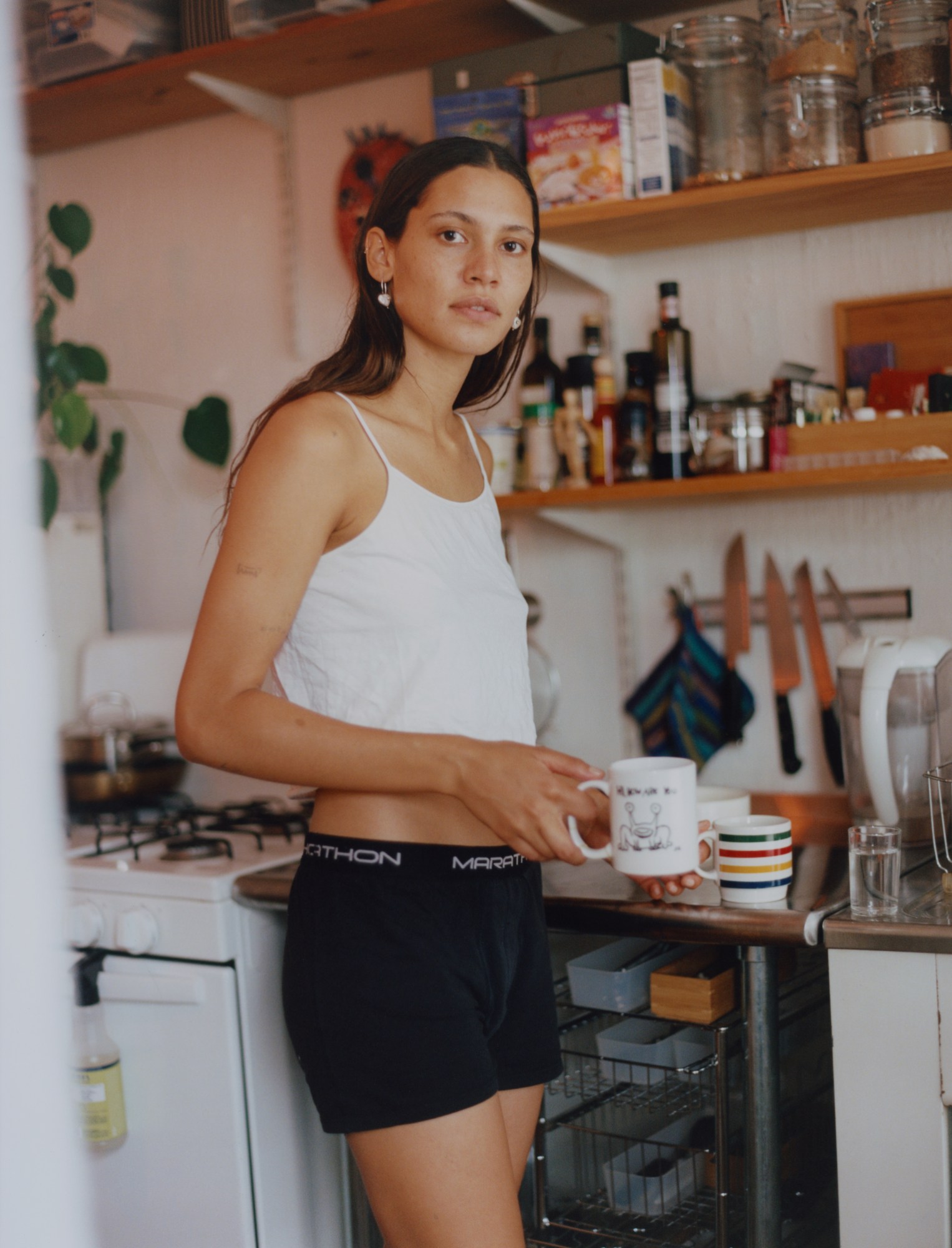
“There’s something witty about it and that’s a tool I use, but I actually do think people will be able to relate more than if it was all sad lyrics and sad sounding. There’s also a choice. You can choose to hang out with the songs in different ways,” Wilkins says. “[While] making a song that’s vulnerable and intense, I don’t want it to feel like I’m hiding in the tools that I’m using. Because I’m not. I feel like they supplement each other in interesting ways.”
Wilkins’ life story is as multifaceted as her music. Her and her five brothers were raised by her mother in Norway, and Wilkins’ love of music stemmed from her mom’s obsession with particular records and spinning them daily for months at a time. “I didn’t know that it wasn’t normal to listen to music 20 hours a day,” she says with a laugh.
At the age of 12, her friend’s dad taught her three chords of a Bob Dylan song on guitar, and for nearly a decade those were the only notes she knew. As a tween, she’d occasionally translate them into black-metal riffs while her brother (who’s now a professional black metal musician in the Norwegian band Asaru) would pound on the double-bass drum.
However, her mother urged her to choose between her hobbies in her teens, and Wilkins landed on dance. It wasn’t until she was a 20-year-old living in New York that she decided to buy a guitar, mostly because she was bored and lonely, but also because she had always been drawn to songwriting as both an art form and a way to process her experiences.
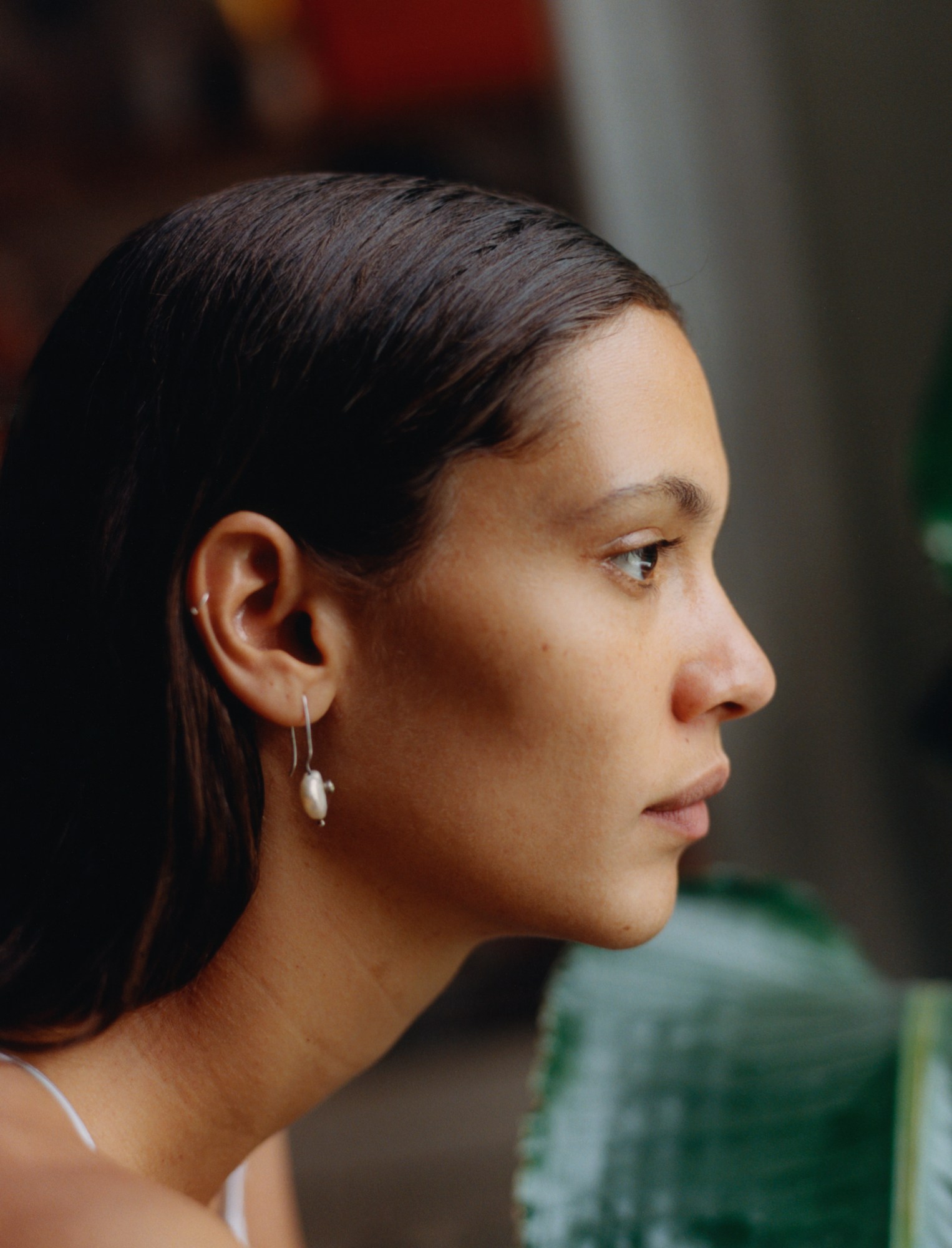
“It’s more than catharsis,” she says. “I think the easiest way to put it is to try and make something beautiful out of something that is not. And so just writing down something that is not great, a bad feeling, isn’t actually that fulfilling to me unless it becomes something else in the process. And normally that’s a song for me.”
Although she’s been modeling full-time for ten years, she considers that her day job; something that pays the bills but that she doesn’t feel creatively inspired by. She’s also acted in a few feature films, most notably the 2017 horror flick Thelma, but she says she struggles to get self tapes in on time when she gets scripts for prospective roles. Right now, her music career is her focus and Watch This Liquid Pour Itself sounds like the result of an artist going all-in.
Wilkins brought on two different producers, Jacob Portrait (Whitney, (Sandy) Alex G) and John Kirby (Solange, Kali Uchis), and the album sounds like the midway point between their respective catalogs: a smorgasbord of minimalist indie-pop and sleek R&B. The songs sound meticulously tinkered over, which they are, but her stream-of-conscious lyrical style comes across as raw and untouched. Interestingly, Wilkins says her songs actually go through a large number of drafts before she hits the studio, but they’re all based on what she calls “the stream.”
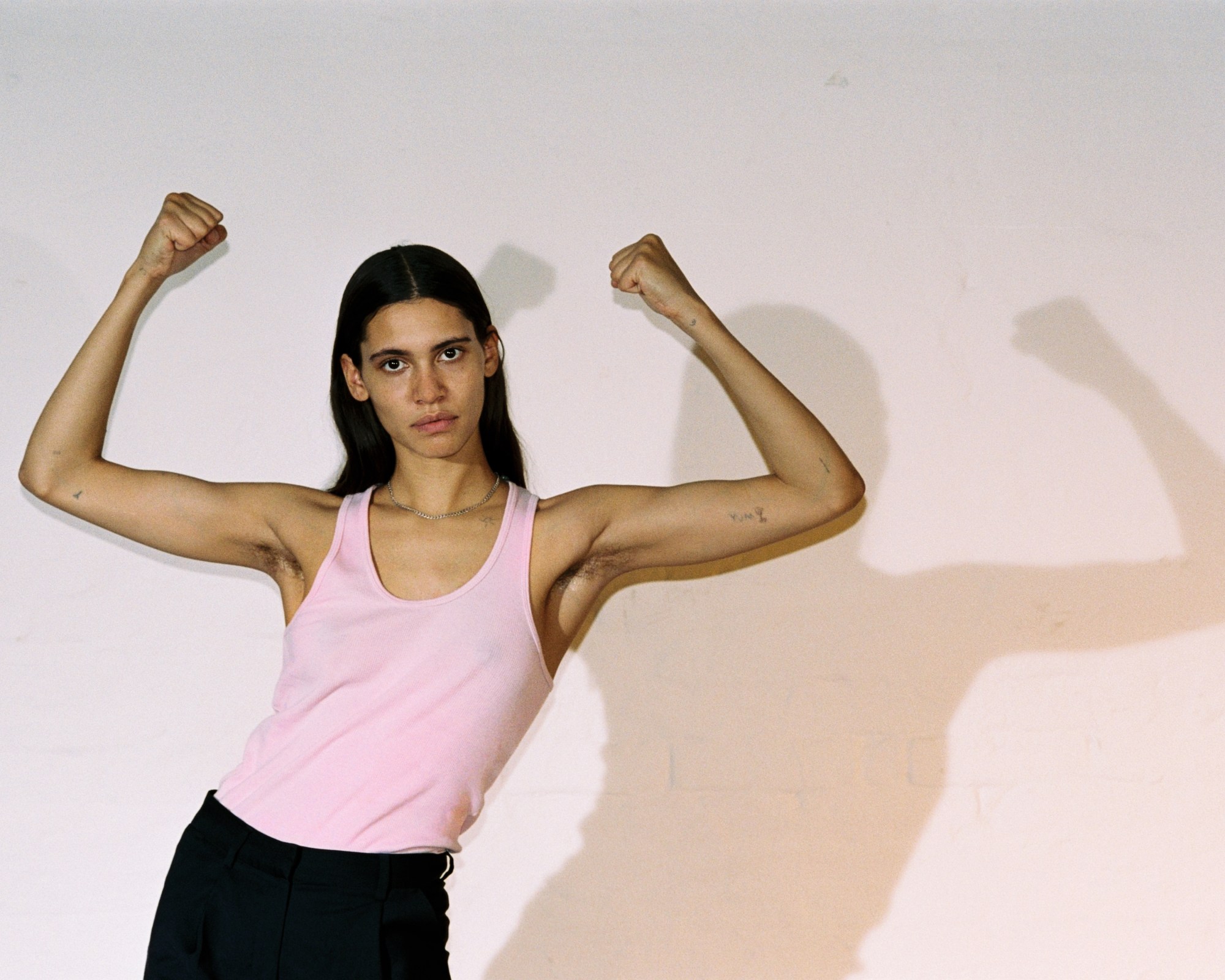
“That is the theme of this record. Is spilling it out as it’s happening, and letting it in. But I think what I’m trying to do with the liquid and the purge is sort of shape it afterward so it feels like it transcends the actual mood and can become something else. [Other] than just a bad experience — or a good experience — or whatever I’m experiencing at that time.”
That vivid idea of the purge originally came to her when she stumbled on a cool science video during a random YouTube binge, which had the phrase “watch this liquid pour itself” in the title. The clip shows a guy demonstrating the bizarre physical attributes of a substance called polyethylene glycol, which will ooze violently out of its container with only a fraction of the effort needed to tip over a glass of water. Wilkins instantly recognized an association between the way the substance unloads and her tendency to purge emotions.
“You know when people talk about objects and are like, ‘That’s so me.’ I think that YouTube video’s the closest thing to an object that feels like me. I just connected to it.”
She hopes that listeners form a similar connection when they hear her pour herself out on the record.
